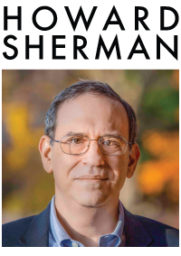By celebrating its 30th anniversary on Broadway last week, The Phantom of the Opera marked what now seems a never-ending series of milestones, having run longer than any show in Broadway history.
The seeming permanence of Phantom may mask its achievement, though it has an eight-year lead on the revival of Chicago and nine years on The Lion King. Even if it were to close tomorrow – and that’s not about to happen – it would take the better part of a decade before either of those surpassed it, if they could.
Congratulations are due, of course, to Andrew Lloyd Webber, but also to Richard Stilgoe, Charles Hart, Harold Prince, Gillian Lynne, Cameron Mackintosh and so many others.
There is a certain irony to Phantom’s stupendous run on Broadway, in the West End and around the world – as pointed out in Harold Prince’s autobiography Contradictions, recently revised and expanded as Sense of Occasion.
In the original 1974 book, Prince predicted that no show would ever run as long as Fiddler on the Roof, which he produced. In Sense of Occasion, he allows that he was wrong, with many shows having surpassed Fiddler – A Chorus Line, Rent, Les Misérables, Wicked and the aforementioned productions to name a few.
Last summer, Prince was quick to contradict a question I asked him about whether shows were being engineered for longer runs. He cited the international market for musicals, and for tourism, as the engine behind the longest-running shows.
What was happening wasn’t a creative decision, but rather a product of changing and expanding opportunities. Shows were running longer because ever more people wanted to see them, the new modes of marketing and because there were successive generations of new audiences.
Certainly long-running shows existed before Phantom and its brethren, but they weren’t in theatres as large, they didn’t play in as many cities, and they didn’t necessarily tour as extensively.
In the West End, The Mousetrap has run for longer, but it is a play, not a musical. In Paris, a revival of Ionesco’s The Bald Soprano has been running at the tiny Theatre de la Huchette for some 60 years. In the late 1980s, I saw a production of The Three Sisters at Moscow Art Theatre that had been in the repertory since the 1940s. It may yet still be there for all I know. The Fantasticks ran for 42 years Off-Broadway at the Sullivan Street Playhouse.
Coming back to Broadway, the expanding list of long runs is something to marvel at, especially if you are among the fortunate who invested in the shows.
But just as the growing markets, according to Prince, expanded the sense of what a Broadway show could achieve, they have also fundamentally changed Broadway itself. I have heard more than a few people remark that they have been in the Majestic Theatre, home to Phantom, only once – or not at all – in their lifetimes.
That is obviously due to the Majestic having had only one show playing for 30 years; the previous tenant, 42nd Street, ran for six years before that.
I should note that Phantom has been around long enough that I saw it on a discounted student ticket. (Though it opened a while after I graduated from university, the friend who bought the seats was only six months past graduation.)
It is possible to applaud Phantom, Chicago and The Lion King and all of those who have made them possible and bask in their success, but also temper that appreciation with caution.
While only a handful of shows each decade will even approach Phantom’s phenomenal run – Hamilton seems poised to be the latest to join that esteemed pantheon – and maybe some will run for only a decade, the impact has already fundamentally changed Broadway.
With a finite number of theatres, hovering at about 40 despite the openings and closings, these hits end up restricting the opportunities for new Broadway work. It’s great news for theatre owners, but limiting for works that might truly benefit from the awareness and opportunity that Broadway affords as a result of its legacy.
Unlike some countries, where we read about purpose-built theatres for each new extravaganza, Manhattan affords little space for new venues, especially in the theatre district.
The Shubert Organization announced, not so long ago, that it would not pursue a new theatre in the area because the costs were prohibitive. Meanwhile, the new venues coming to Manhattan are performing arts centres, designed to house a variety of work.
Only if works can set up in other cities with populations and tourism that approach those of New York, and only if the media affords comparable attention to that devoted to Broadway, might we see an expansion of large-scale work.
Perhaps Chicago, Boston, Washington DC and Philadelphia, to name but four, could become home to long-term work that doesn’t need to play Broadway to ultimately reach vast audiences.
We must accept that the model has changed, as Prince noted, and so change the opportunities for production accordingly. Even leaving aside significant concerns about pricing and accessibility, Broadway’s own success may be limiting new Broadway-scale work.




